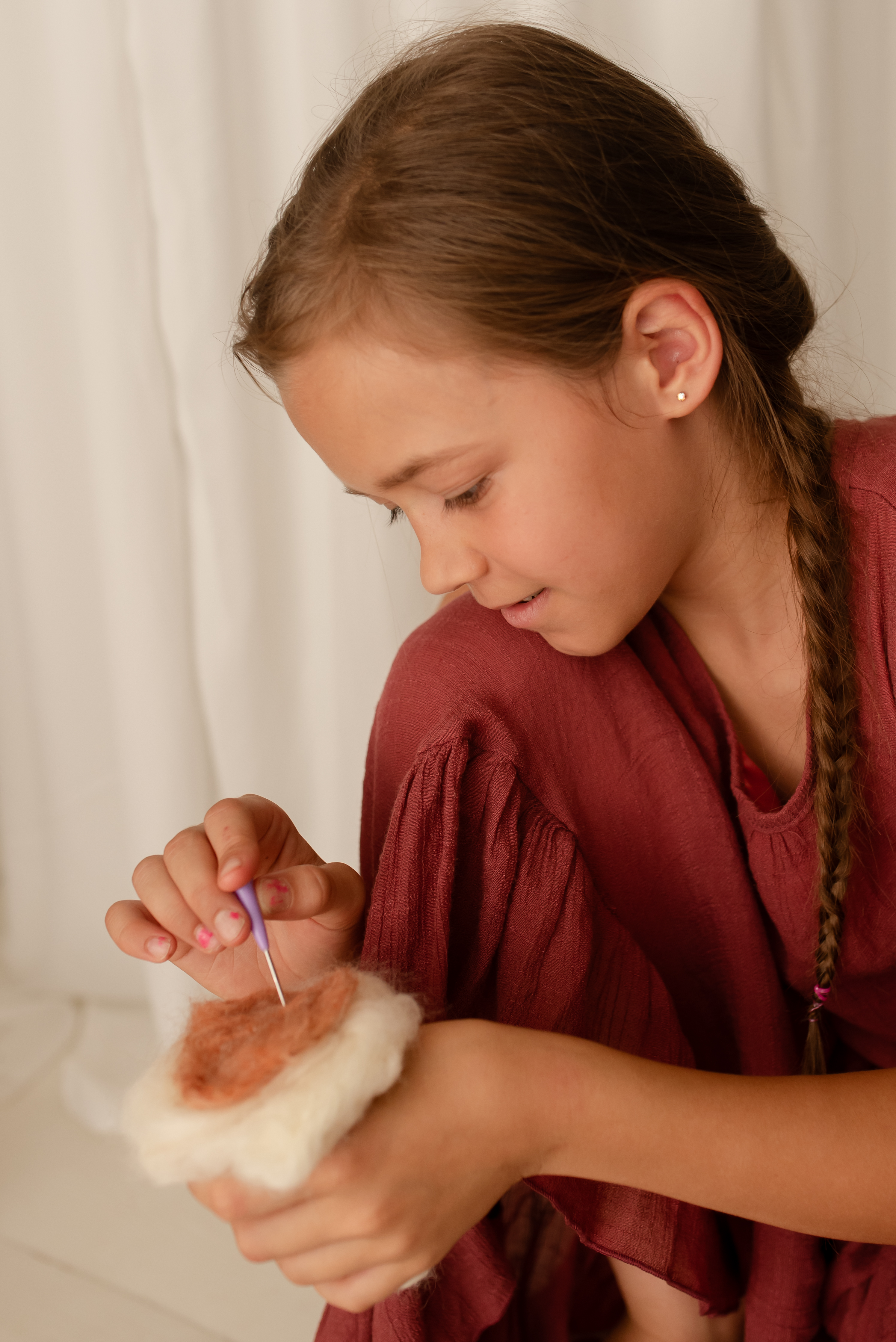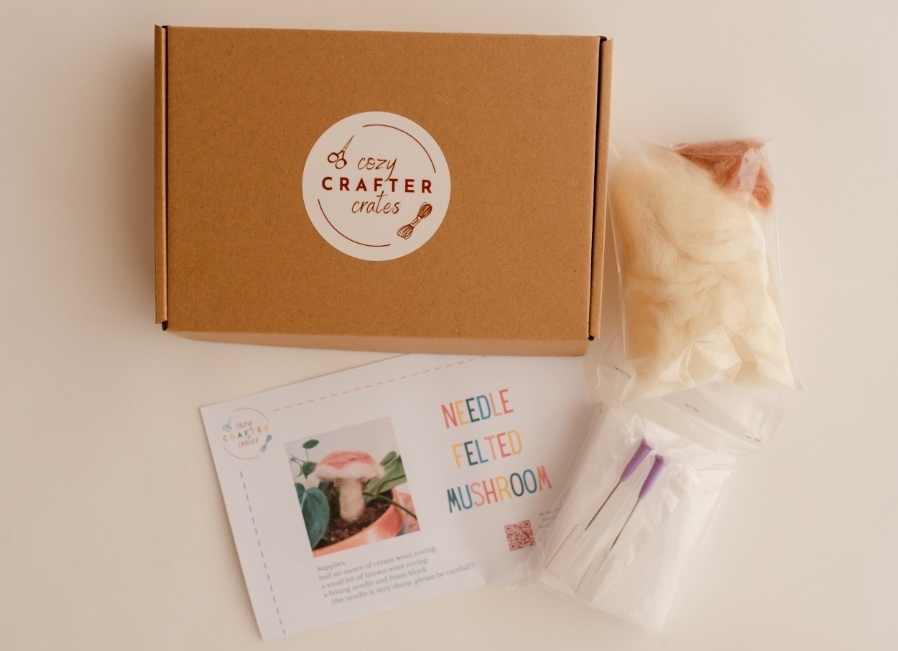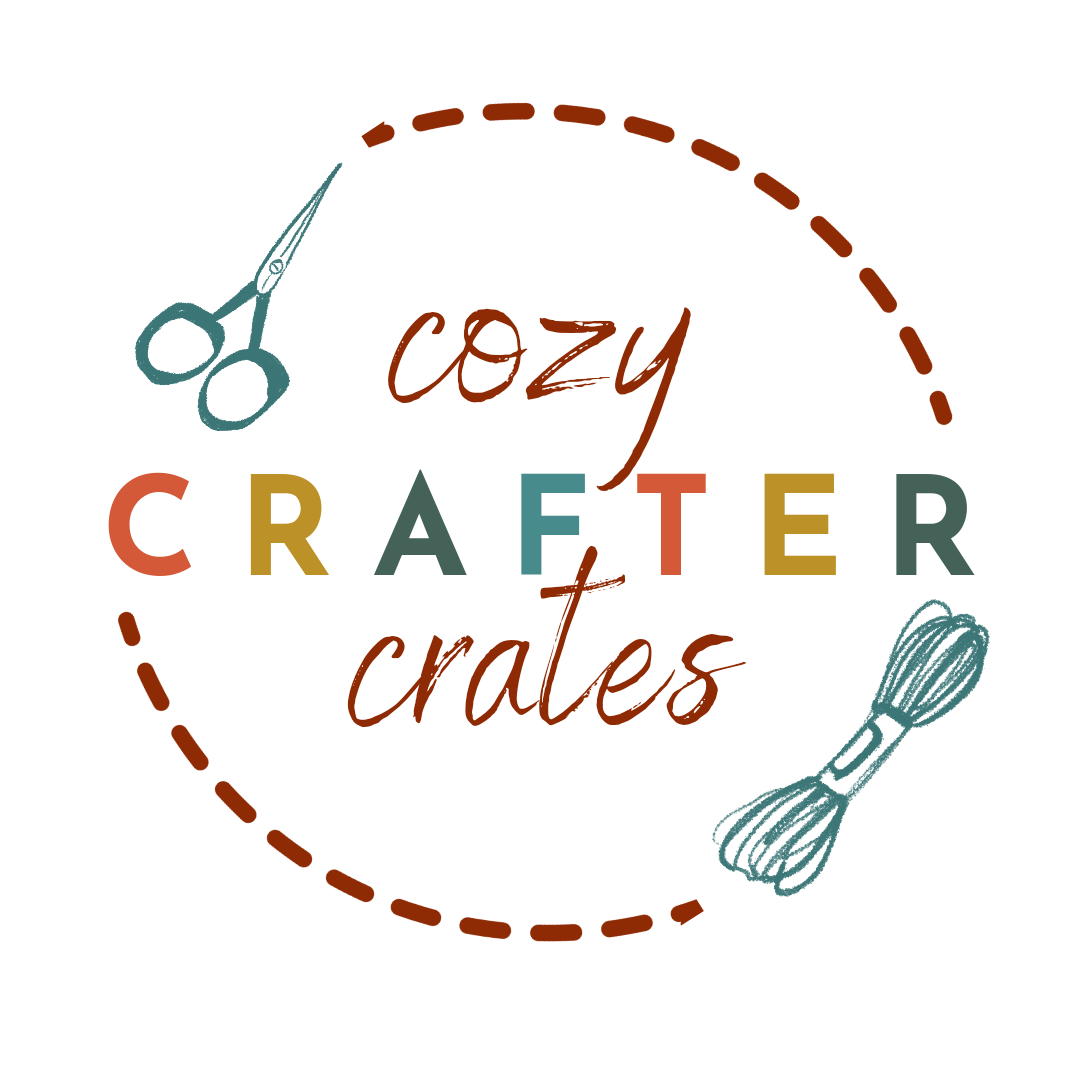Welcome to our monthly exploration of the rich world of handicrafts! At the heart of our Charlotte Mason-inspired subscription box is a deep appreciation for the art of crafting, and we’re thrilled to take you on a journey through various craft techniques and mediums. Each month, we’ll dive into a new craft, uncover its history, and provide practical tips to help you and your children embark on creative adventures. Whether you're a seasoned crafter or just starting out, there's something here for everyone. Let’s get started!
A Brief History of Needle Felting
Needle felting is fascinating craft with a history that’s both ancient and modern. Felting itself is an age-old technique used by various cultures for thousands of years. Needle felting, however, is a more recent innovation that emerged in the 1980s and 1990s.This technique involves using a barbed needle to interlock wool fibers into a dense, fabric-like material. Unlike traditional wet felting, which uses water and agitation, needle felting relies solely on the mechanical action of the needle. It’s a precise and controlled method that allows crafters to create intricate designs and detailed sculptures. The craft has gained popularity due to its accessibility and the unique textures and effects that can be achieved. Needle felting is ideal for creating everything from small decorative pieces to detailed figurines, making it a versatile and enjoyable craft.
Why Needle Felting is Ideal for Families
Needle felting is perfect for families, especially those with older children and teens. The process is relatively clean and does not require extensive preparation or cleanup. The materials are safe to handle, and the technique itself encourages creativity and fine motor skills. Plus, the satisfaction of transforming loose wool into a tangible creation is both rewarding and engaging.

Getting Started with Needle Felting
Materials Needed:
- Felting Needles: Specially barbed needles designed for felting. They come in various sizes and shapes for different effects.
- Wool Roving: Soft, fluffy wool that is the primary material used in needle felting. It comes in a range of colors and types.
- Foam Pad or Felting Mat: A surface to protect your work area and keep the wool in place while you needle it.
- Needle Felting Tools: Optional tools like needle holders or multi-needle tools can speed up the process and create different effects.
- Embroidery Floss or Beads: Optional for adding decorative details.
Beginner’s Project: Needle Felted Miniature Animals
Step 1: Choose Your Design
Start with a simple design for your needle-felted animal. Basic shapes like cats, dogs, or rabbits are great for beginners. You can find free patterns online or draw your own simple design.
Step 2: Prepare Your Wool
Take a small amount of wool roving and pull it apart to separate the fibers. This makes it easier to work with and helps the wool felt more evenly.
Step 3: Begin Felting
Place your wool on the foam pad and start poking it with the felting needle. Use gentle, consistent pressure to interlock the fibers. Shape the wool by poking and turning it until you achieve the desired form. Start with larger shapes and gradually add details.
Step 4: Add Details
Once you have the basic shape, add details like eyes, ears, or patterns by layering more wool and needle-felting it into place. You can use embroidery floss or tiny beads to enhance the features.
Step 5: Final Touches
After you’ve achieved the shape and details you want, give your creation a final once-over to smooth out any rough areas and refine the details.
Tips for Success:
- Work Slowly: Needle felting requires patience. Take your time to achieve the right shape and texture.
- Use a Foam Pad: This protects both your needle and your work surface. It also helps in achieving even felting.
- Be Mindful of the Needle: Felting needles are sharp and can break easily if bent. Use gentle, straight motions.
Looking Ahead
Stay tuned for next month’s edition of “Exploring Different Handicraft Techniques” where we’ll delve into the art of macrame. We’ll uncover its history, explore different knots, and provide beginner-friendly projects to inspire your next creative endeavor.
We hope this feature inspires you to dive into the world of needle felting. Happy crafting, and we look forward to exploring more techniques with you in the coming months!
Additional Resources
We provide needle felting kits thru our Cozy Crafter Crates shop or you can purchase a digital membership that gives you access to the unit study on needle felting that includes supply lists and instructions.


